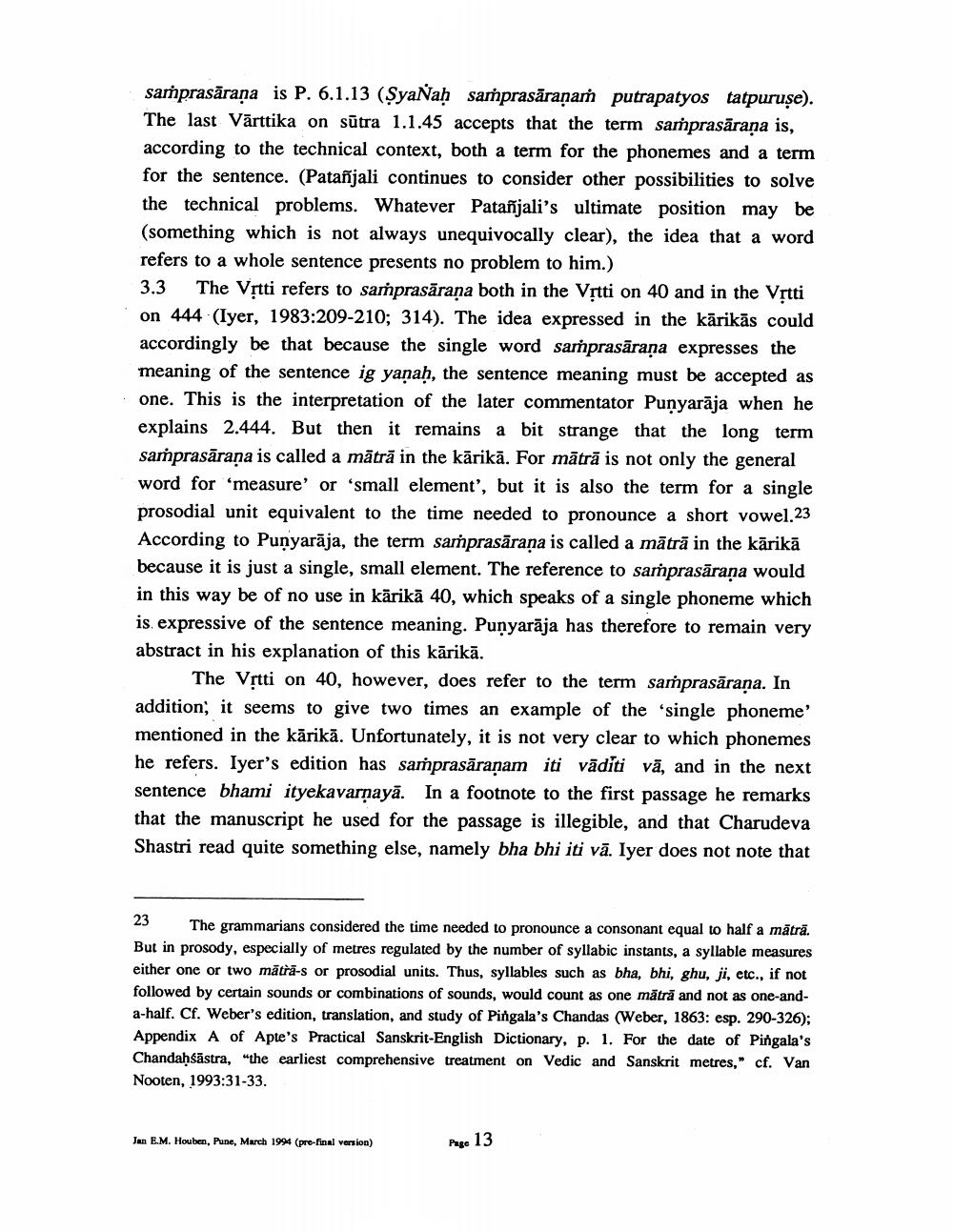________________
sariprasarana is P. 6.1.13 (SyaÑaḥ sarhprasaraṇarh putrapatyos tatpuruse). The last Varttika on sūtra 1.1.45 accepts that the term samprasāraṇa is, according to the technical context, both a term for the phonemes and a term for the sentence. (Patanjali continues to consider other possibilities to solve the technical problems. Whatever Patanjali's ultimate position may be (something which is not always unequivocally clear), the idea that a word. refers to a whole sentence presents no problem to him.)
3.3 The Vitti refers to sarhprasarana both in the Vṛtti on 40 and in the Vṛtti on 444 (Iyer, 1983:209-210; 314). The idea expressed in the kärikäs could accordingly be that because the single word sarhprasarana expresses the meaning of the sentence ig yaṇaḥ, the sentence meaning must be accepted as one. This is the interpretation of the later commentator Punyarāja when he explains 2.444. But then it remains a bit strange that the long term sarhprasarana is called a mäträ in the kärikā. For mäträ is not only the general word for 'measure' or 'small element', but it is also the term for a single prosodial unit equivalent to the time needed to pronounce a short vowel.23 According to Punyarāja, the term samhprasarana is called a mäträ in the kärikä because it is just a single, small element. The reference to samprasarana would in this way be of no use in kärikä 40, which speaks of a single phoneme which is expressive of the sentence meaning. Punyaraja has therefore to remain very abstract in his explanation of this kārikā.
The Vrtti on 40, however, does refer to the term samprasaraṇa. In addition; it seems to give two times an example of the single phoneme mentioned in the kärikā. Unfortunately, it is not very clear to which phonemes he refers. Iyer's edition has sarhprasaranam iti vādīti vä, and in the next sentence bhami ityekavarṇaya. In a footnote to the first passage he remarks that the manuscript he used for the passage is illegible, and that Charudeva Shastri read quite something else, namely bha bhi iti vä. Iyer does not note that
23 The grammarians considered the time needed to pronounce a consonant equal to half a mātrā. But in prosody, especially of metres regulated by the number of syllabic instants, a syllable measures either one or two matra-s or prosodial units. Thus, syllables such as bha, bhi, ghu, ji, etc., if not followed by certain sounds or combinations of sounds, would count as one mäträ and not as one-anda-half. Cf. Weber's edition, translation, and study of Pingala's Chandas (Weber, 1863: esp. 290-326); Appendix A of Apte's Practical Sanskrit-English Dictionary, p. 1. For the date of Pingala's Chandaḥśāstra, "the earliest comprehensive treatment on Vedic and Sanskrit metres," cf. Van Nooten, 1993:31-33.
Jan E.M. Houben, Pune, March 1994 (pre-final version)
Page 13




